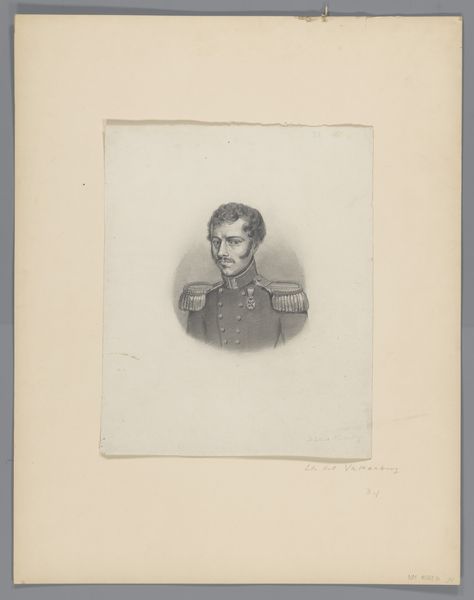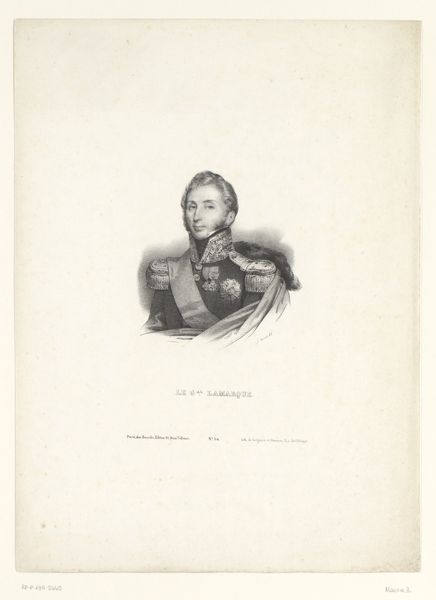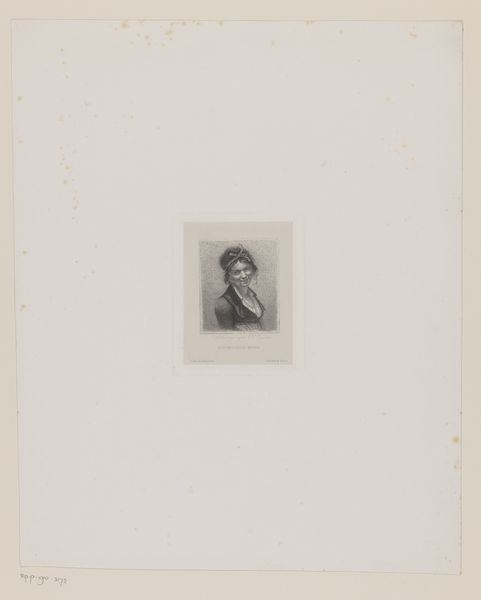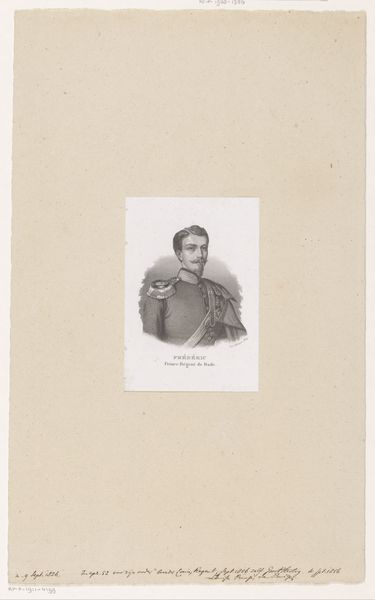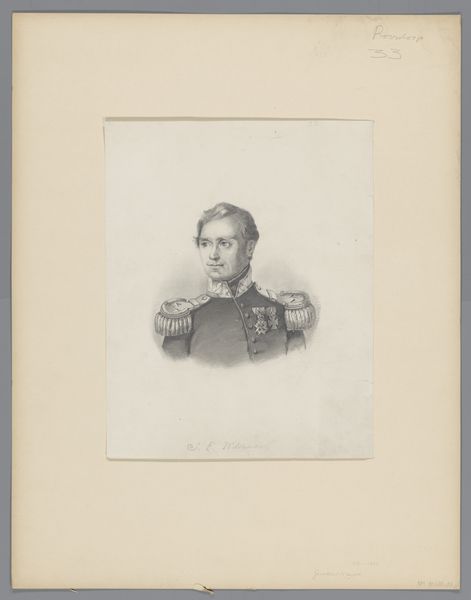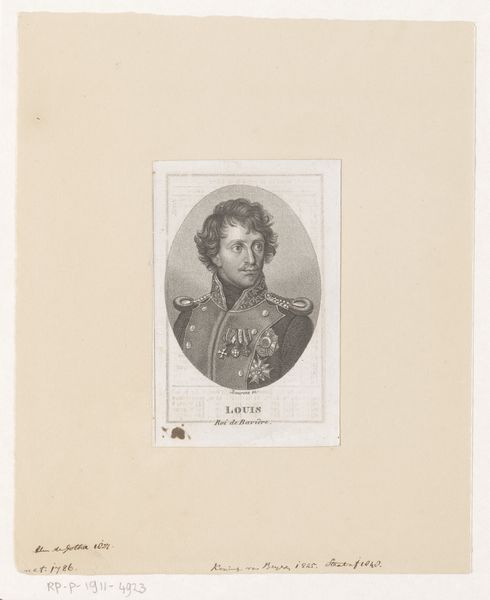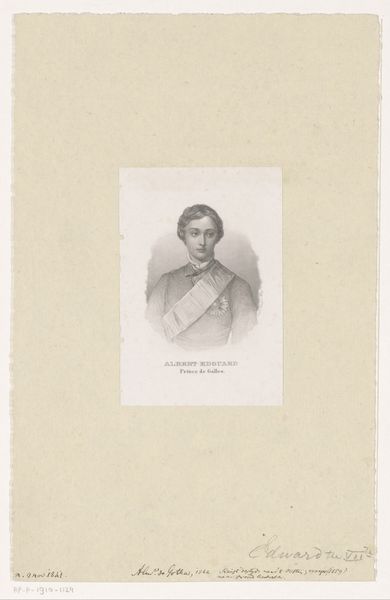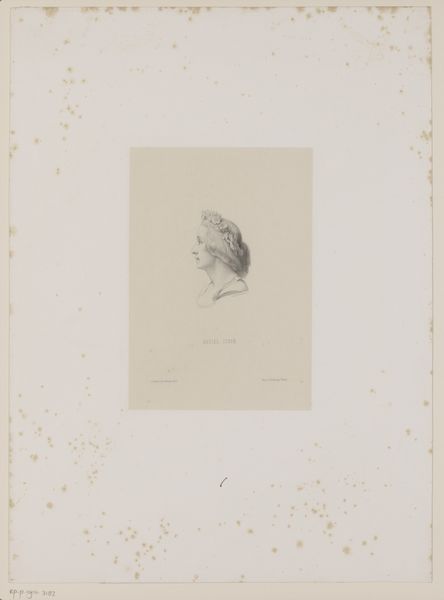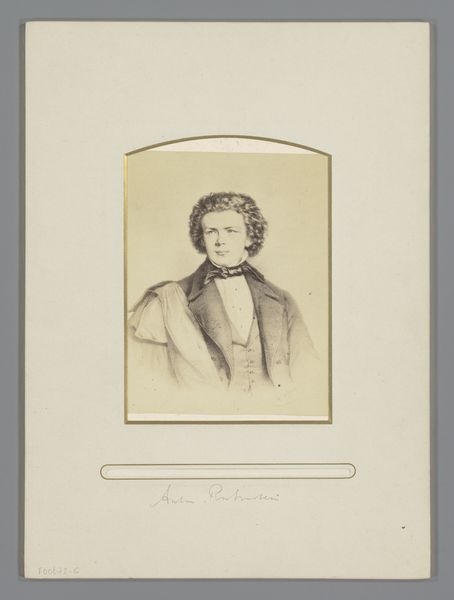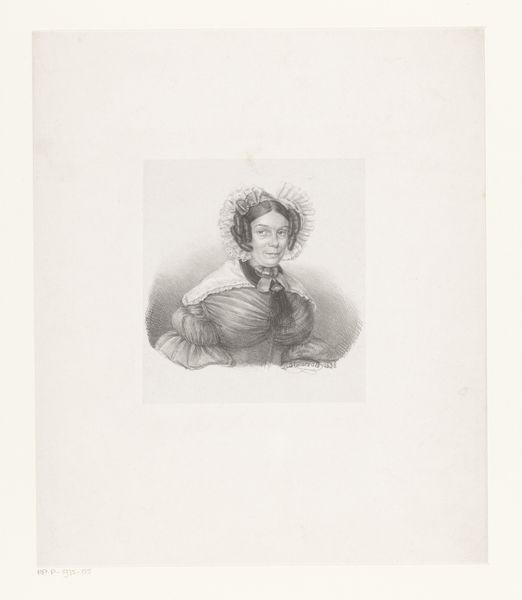
print, graphite
#
portrait
# print
#
graphite
Dimensions: height 212 mm, width 173 mm
Copyright: Rijks Museum: Open Domain
Curator: I’m immediately drawn to the formality here, and the quiet restraint of the graphite. Editor: Indeed. We’re looking at an 1867 print titled "Portret van D.L. Wilhelmie," produced by Cornelis Sebille Roos. It's housed here at the Rijksmuseum. Wilhelmie, judging by his attire, was likely a man of significant status. The visual cues tell a story of power. Curator: Absolutely. The elaborate military uniform with its epaulettes and decorations speaks volumes. Symbols are everything here, carefully constructing an image of authority. There’s a certain weight in his gaze, projecting confidence and control. I can’t help but wonder what ideals this representation tries to embody, and why someone felt compelled to reproduce and circulate this image in print. Editor: I agree; considering the period, we must see this as more than just an attempt at capturing a likeness. Power is performative, especially in portraiture. Note the specific details meant to signify leadership, suggesting wider social expectations for men in power. It’s fascinating to consider whether Wilhelmie truly embodies this prescribed role. How did the printing of images like this influence those structures? Curator: It underscores the performative element, transforming individual identity into a publicly consumed symbol of military prowess. Do you sense any vulnerability? Maybe behind those unwavering eyes? It’s in moments where those small clues present themselves that we see art become so transformative and illuminating. Editor: Possibly, though any vulnerability is deliberately muted, almost buried. This is not simply a portrait of a person, it's an embodiment of empire itself and perhaps an instrument for maintaining established hierarchies in 19th century Netherlands. Still, the print makes us ask if the image captures authenticity or serves simply as political propaganda. Curator: That’s the wonderful friction present when observing something. Both the symbols on display and their intended affect have everything to do with the viewer and how it’s received. For me, that dialogue helps create its enduring relevance. Editor: Indeed. Engaging with pieces like these urges us to explore layers of self-expression and also societal constraints, giving us insight into power relations.
Comments
No comments
Be the first to comment and join the conversation on the ultimate creative platform.
